
Velopharyngeal-nasal Function & Speech Production
Skeletal Superstructure
pg 120 textbook
temporal bone
nasal bone
alveolar process
maxillary bone
mandible
styloid process
mastoid process
zygomatic bone
nasal choana
vomer
The Pharynx
extends from base of skull to cricoid cartilage in front and to 6th cervical vertebra in the back
pharynx is an oval tube, larger side to side than front to back
connective tissue predominates at the top
muscle predominates at the bottom
continues w/esophagus at lower end
3 cavities
nasopharynx
hard palate is lower boundary
oropharynx
between hard palate and hyoid bone
contains palatine tonsils and lingual tonsils
laryngopharynx
between the hyoid and base of cricoid cartilage
faucial isthmus
narrow opening between velum and the tongue and between anterior faucial pillars
Velum
velum means “curtain”
consists of soft palate and uvula
covered w/connective tissue
Muscle fibers are most numerous in the middle portion; scarce at the front and back
Nasal Cavities
also called nasal fossae
2 chambers separated by nasal septum
septum is cartilage at front, bone at back
floor is hard palate
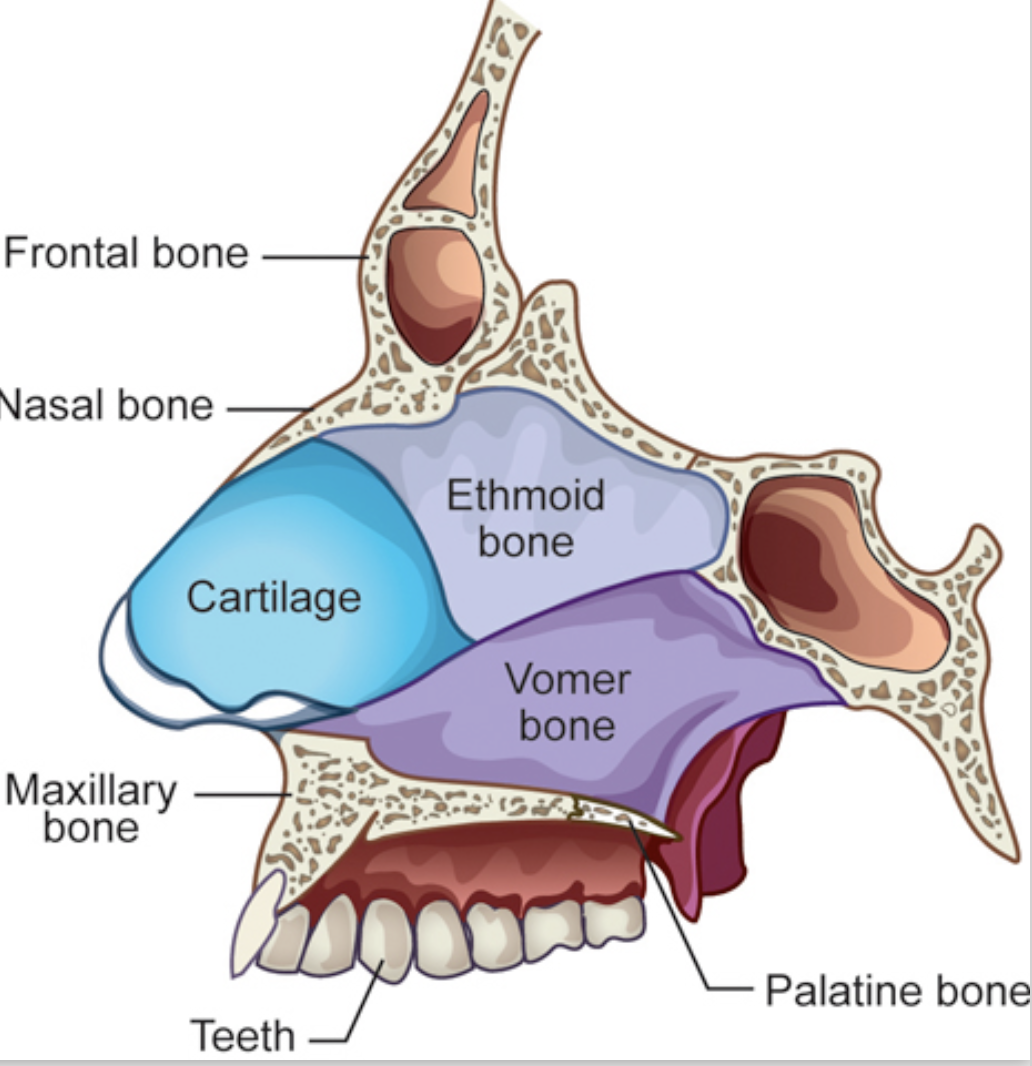
lateral walls are made up of conchae
conchae - curled and convoluted bone
nasal vestibule at fornt
rich blood supply
The Outer Nose
root
bridge
dorsum
ala
apex
anterior naris
base
septum
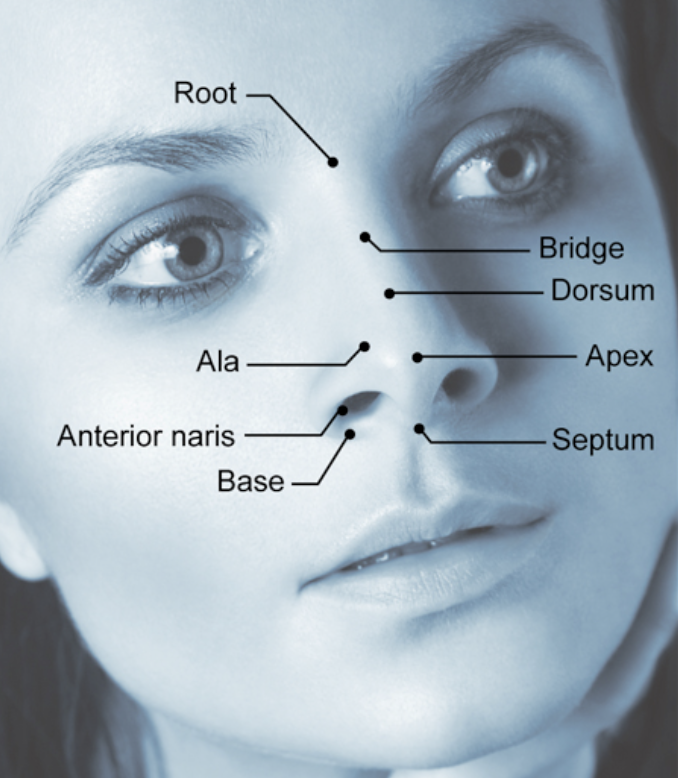
Forces
passive
recoil of muscles, cartilages, and connective tissues
surface tension
gravity
aeromechanical forces
active
muscles of pharynx
muscles of velum
muscles of outer nose
Muscles of Pharynx
The constrictors
function: pull pharyngeal walls inward and forward to constrict pharyngeal tube
Superior constrictor
originates at front of pharyngeal tube and inserts into median raphe of posterior pharyngeal wall
middle constrictor
inferior constrictor
consists of 2 parts
thyropharyngeus (upper)
cricopharyngeus (lower)
Salpingopharyngeus
function: pulls lateral pharyngeal walls upward and inward
origin: near lower border of pharyngeal orifice of auditory tube
insertion: lateral pharyngeal wall

Stylopharyngeus
Function: pulls up on pharynx and pulls lateral walls outward (widens pharynx)
Origin: styloid process
Insertion: lateral pharyngeal wall and thyroid cartilage
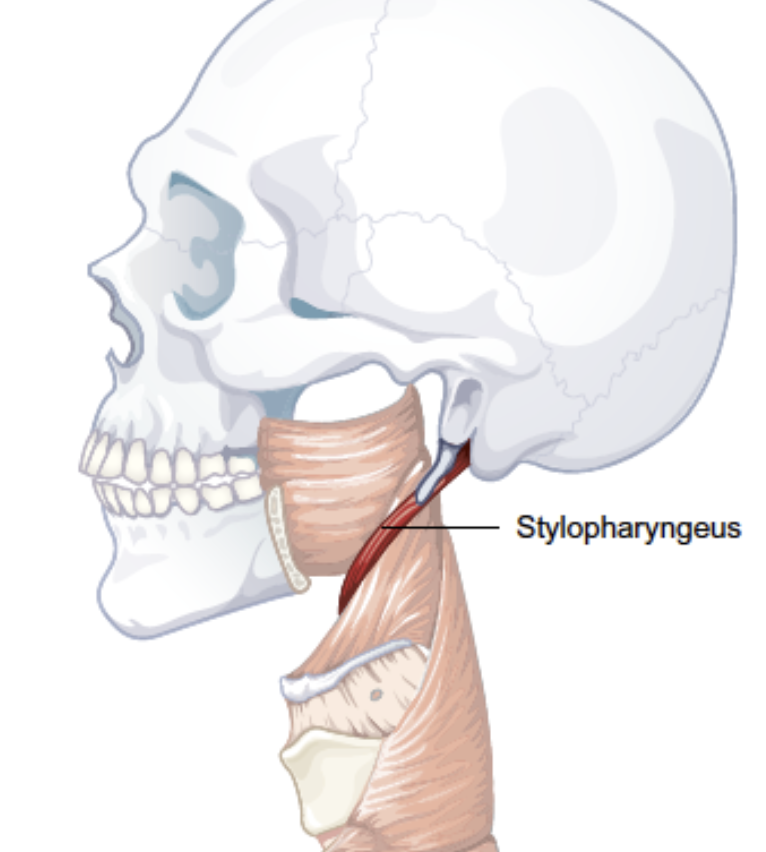
Palatopharyngeus
Function: pulls inward on upper pharyngeal walls and upward on lower lateral pharyngeal walls (with velum fixed)
Origin: soft palate
Insertion: lower lateral wall of pharynx and thyroid cartilage
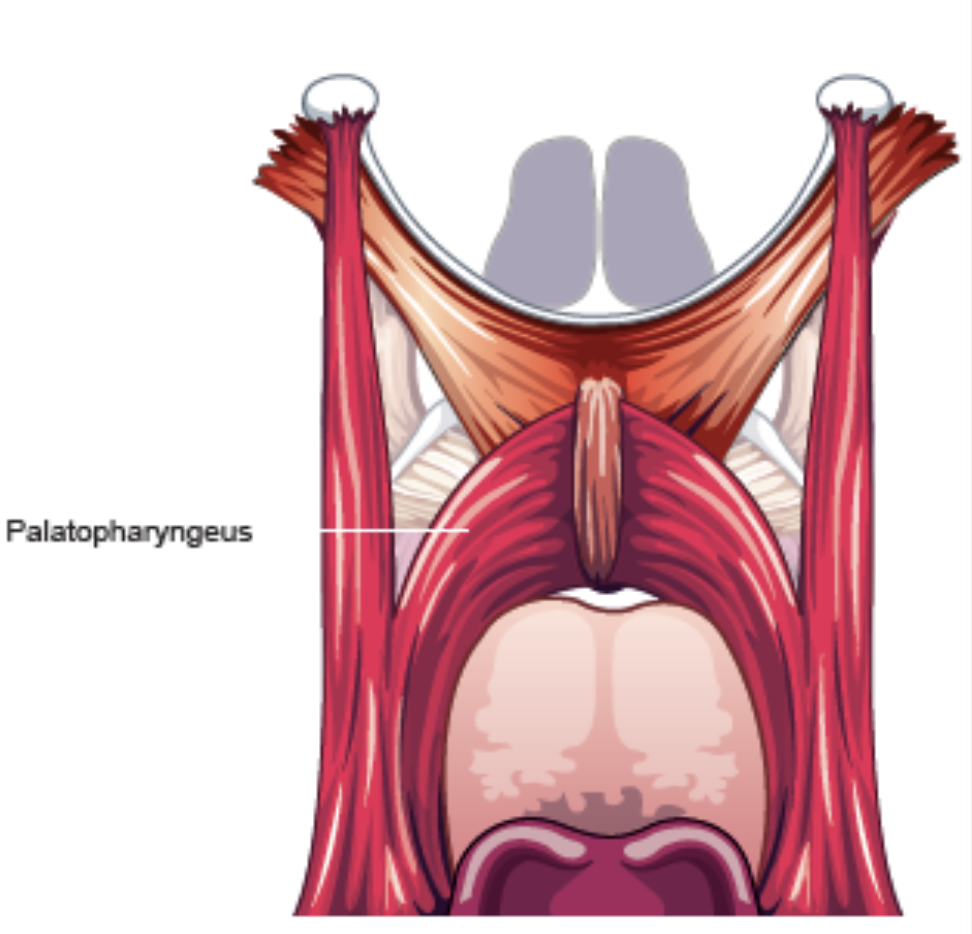
Muscles of the velum
Palatal Levator (levator veli palatini)
function: draws the velum upward and backward
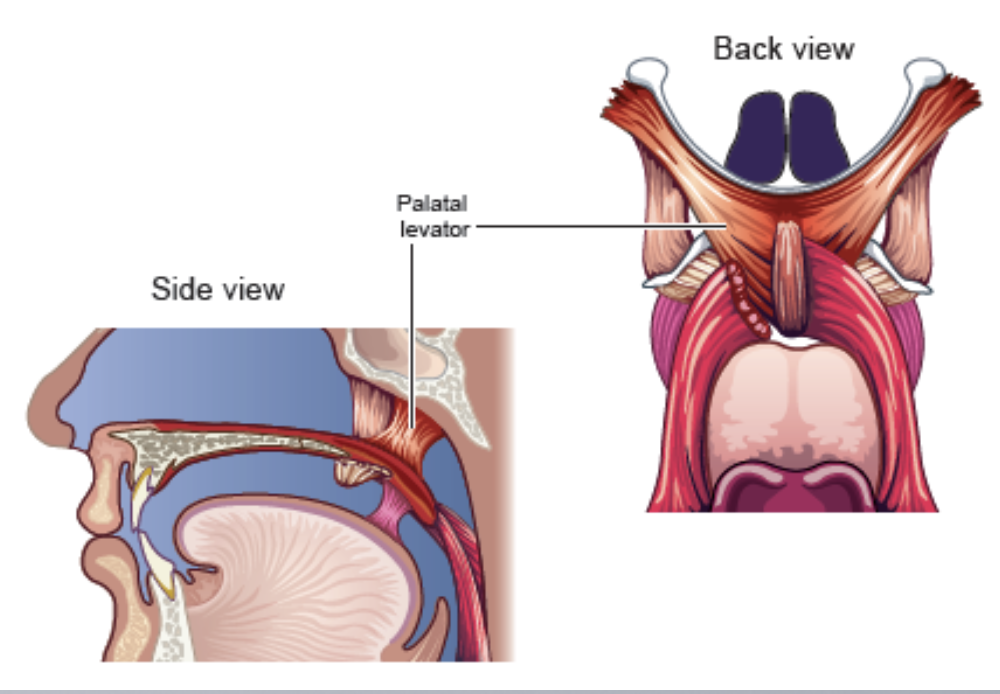
Palatal tensor (tensor veli palatini)
function: opens the auditory tube
Uvulus
function: shorten, lift, increase bulk of velum
only intrinsic muscle of the velum
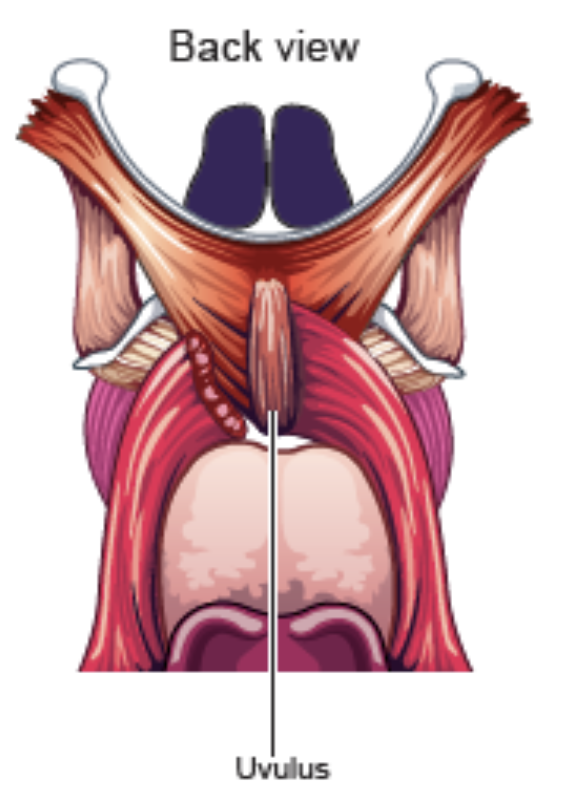
Glossopalatine
function: pulls downward and forward on the velum (with tongue fixed)
Origin: side of tongue
insertion: lower surface of palatal aponeurosis
Pharyngopalatine
function: pulls downward and backward on velum (with pharynx fixed)
origin: lower lateral wall of pharynx and thyroid cartilage
insertion: runs through posterior faucial pillar and inserts into soft palate and superior constrictor muscle
Muscles of the Outer Nose
Levator labii superioris alaeque nasi
function: draws the ala upward and enlarges the naris
origin: frontal process and infraorbital margin of maxilla
insertion: divides with one part inserting into upper lip and the other into cartilage of nasal ala
Anterior nasal dilator
function: enlarges the naris
origin: lower edge of lateral nasal cartilage
insertion: deep surface of the skin near the outer margin of the naris on the same side
posterior nasal dilator
function: enlarges the naris
origin: nasal notch of maxilla and sesamoid cartilages of the outer nose
insertion: into the skin near the alar cartilage along outer naris on the same side
nasalis
function: constricts the naris
origin: maxilla
insertion: aponeurosis
depressor alae nasi
function: draw outer nose down, decrease naris aperture (constricts naris)
origin: fossa of maxilla
insertion: back part of ala
Movements of Velopharyngeal-nasal apparatus
movements of pharynx
lengthening/shortening by vertical movements of larynx
inward/outward movements of lateral pharyngeal walls
forward/backward movements of posterior pharyngeal walls
forward/backward movements of velum, tongue, and epiglottis
movements of the velum
Velopharyngeal-nasal Function & Speech Production
Skeletal Superstructure
pg 120 textbook
temporal bone
nasal bone
alveolar process
maxillary bone
mandible
styloid process
mastoid process
zygomatic bone
nasal choana
vomer
The Pharynx
extends from base of skull to cricoid cartilage in front and to 6th cervical vertebra in the back
pharynx is an oval tube, larger side to side than front to back
connective tissue predominates at the top
muscle predominates at the bottom
continues w/esophagus at lower end
3 cavities
nasopharynx
hard palate is lower boundary
oropharynx
between hard palate and hyoid bone
contains palatine tonsils and lingual tonsils
laryngopharynx
between the hyoid and base of cricoid cartilage
faucial isthmus
narrow opening between velum and the tongue and between anterior faucial pillars
Velum
velum means “curtain”
consists of soft palate and uvula
covered w/connective tissue
Muscle fibers are most numerous in the middle portion; scarce at the front and back
Nasal Cavities
also called nasal fossae
2 chambers separated by nasal septum
septum is cartilage at front, bone at back
floor is hard palate

lateral walls are made up of conchae
conchae - curled and convoluted bone
nasal vestibule at fornt
rich blood supply
The Outer Nose
root
bridge
dorsum
ala
apex
anterior naris
base
septum

Forces
passive
recoil of muscles, cartilages, and connective tissues
surface tension
gravity
aeromechanical forces
active
muscles of pharynx
muscles of velum
muscles of outer nose
Muscles of Pharynx
The constrictors
function: pull pharyngeal walls inward and forward to constrict pharyngeal tube
Superior constrictor
originates at front of pharyngeal tube and inserts into median raphe of posterior pharyngeal wall
middle constrictor
inferior constrictor
consists of 2 parts
thyropharyngeus (upper)
cricopharyngeus (lower)
Salpingopharyngeus
function: pulls lateral pharyngeal walls upward and inward
origin: near lower border of pharyngeal orifice of auditory tube
insertion: lateral pharyngeal wall

Stylopharyngeus
Function: pulls up on pharynx and pulls lateral walls outward (widens pharynx)
Origin: styloid process
Insertion: lateral pharyngeal wall and thyroid cartilage

Palatopharyngeus
Function: pulls inward on upper pharyngeal walls and upward on lower lateral pharyngeal walls (with velum fixed)
Origin: soft palate
Insertion: lower lateral wall of pharynx and thyroid cartilage

Muscles of the velum
Palatal Levator (levator veli palatini)
function: draws the velum upward and backward

Palatal tensor (tensor veli palatini)
function: opens the auditory tube
Uvulus
function: shorten, lift, increase bulk of velum
only intrinsic muscle of the velum

Glossopalatine
function: pulls downward and forward on the velum (with tongue fixed)
Origin: side of tongue
insertion: lower surface of palatal aponeurosis
Pharyngopalatine
function: pulls downward and backward on velum (with pharynx fixed)
origin: lower lateral wall of pharynx and thyroid cartilage
insertion: runs through posterior faucial pillar and inserts into soft palate and superior constrictor muscle
Muscles of the Outer Nose
Levator labii superioris alaeque nasi
function: draws the ala upward and enlarges the naris
origin: frontal process and infraorbital margin of maxilla
insertion: divides with one part inserting into upper lip and the other into cartilage of nasal ala
Anterior nasal dilator
function: enlarges the naris
origin: lower edge of lateral nasal cartilage
insertion: deep surface of the skin near the outer margin of the naris on the same side
posterior nasal dilator
function: enlarges the naris
origin: nasal notch of maxilla and sesamoid cartilages of the outer nose
insertion: into the skin near the alar cartilage along outer naris on the same side
nasalis
function: constricts the naris
origin: maxilla
insertion: aponeurosis
depressor alae nasi
function: draw outer nose down, decrease naris aperture (constricts naris)
origin: fossa of maxilla
insertion: back part of ala
Movements of Velopharyngeal-nasal apparatus
movements of pharynx
lengthening/shortening by vertical movements of larynx
inward/outward movements of lateral pharyngeal walls
forward/backward movements of posterior pharyngeal walls
forward/backward movements of velum, tongue, and epiglottis
movements of the velum
 Knowt
Knowt
